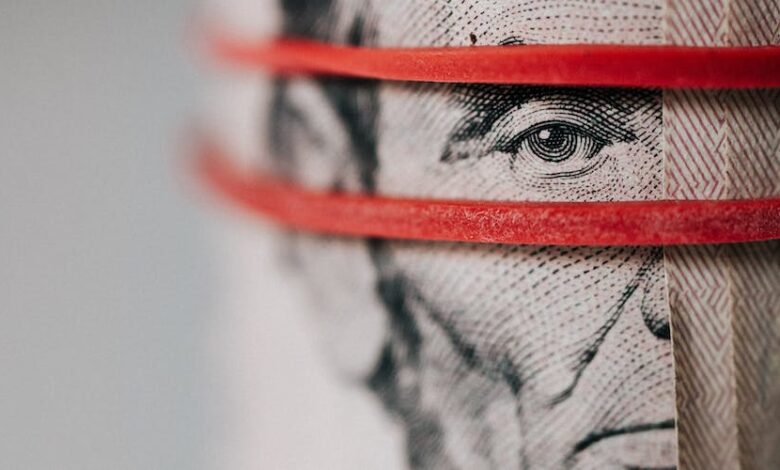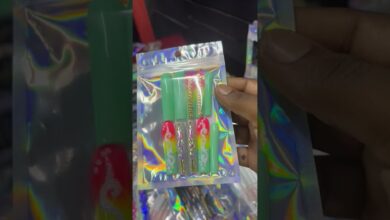The USD-NIS Exchange Rate Understanding, Factors, and Analysis


The exchange rate between currencies can significantly impact economies, businesses, trade, and investments. One such currency pair is the United States Dollar (USD) and the Israeli New Shekel (NIS). In recent years, the USD-NIS exchange rate has fluctuated, creating both opportunities and challenges for stakeholders. This article aims to provide a comprehensive understanding of the USD-NIS exchange rate, including its factors, trends, pros and cons, alternatives, and practical tips.
What is the USD-NIS Exchange Rate?
The USD-NIS exchange rate reflects the value of one US dollar in terms of Israeli new shekels. For instance, if the exchange rate is 3.5 USD/NIS, it means that one US dollar is worth 3.5 Israeli new shekels. The exchange rate is determined by the supply and demand of each currency in the foreign exchange market, where individuals, banks, corporations, and governments buy and sell currencies.
Who Are Affected By the USD-NIS Exchange Rate?
The USD-NIS exchange rate impacts various stakeholders, such as:
- Governments: A strong USD-NIS exchange rate can benefit Israeli exporters by making their products cheaper for US buyers. However, it can harm Israeli importers by increasing the cost of US imports. On the other hand, a weak USD-NIS exchange rate can benefit Israeli importers but harm exporters.
- Investors: Individuals or companies who invest in Israeli or US assets can be affected by the exchange rate since it determines their returns in their local currency. For instance, if an Israeli investor buys US stocks when the exchange rate is high, they may earn higher returns when they sell the stocks and convert the profits to shekels.
- Travelers: Individuals who travel from Israel to the US or vice versa may be affected by the exchange rate since it determines the cost of goods and services in their local currency. For example, if an Israeli traveler visits the US when the exchange rate is low, they may need to spend more shekels to buy the same amount of dollars.
- Businesses: Companies that import or export goods or services between Israel and the US can be affected by the exchange rate since it impacts their costs and revenues. If a company exports goods from Israel to the US, a strong USD-NIS exchange rate can make their products less competitive compared to US-based competitors. Conversely, if a company imports goods from the US to Israel, a weak USD-NIS exchange rate can increase their costs.
When Does the USD-NIS Exchange Rate Fluctuate?
The USD-NIS exchange rate is influenced by various factors, including:
- Macroeconomic indicators: Global economic events and news, such as interest rates, inflation, GDP growth, trade policies, and political stability, can affect the supply and demand of each currency and, thus, the exchange rate. For example, if the US Federal Reserve raises interest rates, it can attract foreign investors who seek higher returns, increasing the demand for US dollars, and potentially strengthening the exchange rate.
- Market sentiment: The perception of traders and investors about the future direction of the USD-NIS exchange rate can influence their buying and selling decisions, leading to short-term fluctuations. For instance, if there is uncertainty or volatility in the global markets due to geopolitical tensions or natural disasters, traders may sell risky assets, such as stocks, and buy safe-haven assets, such as US treasuries, which can strengthen the US dollar and weaken the NIS.
- Speculative trading: Some traders and hedge funds may speculate on the USD-NIS exchange rate by buying or selling large amounts of currencies, hoping to profit from the price movements. While speculative trading can create liquidity in the market, it can also amplify the volatility and unpredictability of the exchange rate.
How to Analyze the USD-NIS Exchange Rate?
There are several methods and tools that analysts can use to analyze the USD-NIS exchange rate, such as:
- Technical analysis: This approach uses historical price and volume data to identify patterns, trends, and support and resistance levels in the exchange rate. Technical analysts may use charts, indicators, and oscillators to make buy or sell signals based on their interpretation of the market conditions.
- Fundamental analysis: This approach focuses on macroeconomic and financial factors that can affect the supply and demand of each currency and, thus, the exchange rate. Fundamental analysts may analyze data and news related to interest rates, inflation, trade balances, political developments, and other indicators to forecast the future direction of the exchange rate.
- Sentiment analysis: This approach uses social media, news articles, and other sources to gauge the market sentiment about the USD-NIS exchange rate. Sentiment analysts may use natural language processing (NLP) and machine learning techniques to extract and analyze the textual data and make predictions about the future exchange rate.
Pros and Cons of the USD-NIS ExchangeRate
Like any currency pair, the USD-NIS exchange rate has its advantages and disadvantages. Some of the pros and cons are:
Pros
- Diversification: Investors who hold assets denominated in both USD and NIS can benefit from diversification, reducing their portfolio risk by spreading their investments across different currencies.
- Export opportunities: Israeli companies that export goods or services to the US can benefit from a strong USD-NIS exchange rate, as it can make their products more affordable for US buyers, potentially increasing their sales and profits.
- Tourism boost: A weak USD-NIS exchange rate can attract more US tourists to Israel since they may get more value for their dollars when spending on hotels, restaurants, and attractions.
Cons
- Import costs: Israeli companies that import goods or services from the US may face higher costs when the USD-NIS exchange rate is weak, potentially lowering their profit margins or raising prices for consumers.
- Exchange rate risk: Investors who hold assets denominated in either USD or NIS can be exposed to exchange rate risk, meaning that they may lose money if the exchange rate moves against them. For instance, if an Israeli investor holds US stocks and the USD-NIS exchange rate drops, they may earn lower returns when converting the profits to shekels.
- Volatility: The USD-NIS exchange rate can be volatile, meaning that it can fluctuate rapidly and unpredictably due to various factors, such as market sentiment, news, and economic indicators. High volatility can create uncertainty and risk for investors and businesses.
Alternatives to the USD-NIS Exchange Rate
Investors and businesses who want to avoid the risks and fluctuations of the USD-NIS exchange rate can consider several alternatives, such as:
- Currency hedging: This strategy involves using financial instruments, such as options, futures, or forward contracts, to protect against currency risks. For example, an Israeli exporter who expects to receive payments in USD next year can use a forward contract to lock in the exchange rate and avoid losses if the USD-NIS exchange rate drops.
- Diversification: Investors can diversify their portfolio across different currencies, regions, and asset classes to reduce their exposure to currency risks. For instance, an Israeli investor can hold a mix of US stocks, European bonds, and Japanese yen to spread their investments across multiple currencies and markets.
- Local investing: Investors can consider investing in local assets denominated in their own currency, such as Israeli stocks or bonds for Israeli investors, to minimize the currency risk. By investing locally, individuals or companies can earn returns in their local currency, reducing their exposure to foreign exchange fluctuations.
Step by Step Guide to Analyzing the USD-NIS Exchange Rate
Here are some practical steps that analysts can follow to analyze the USD-NIS exchange rate:
- Gather relevant data: Collect historical and current data about the USD-NIS exchange rate, such as daily or monthly prices, volume, and open interest. You can use financial websites, such as Yahoo Finance, Bloomberg, or TradingView, to download or access the data.
- Choose an analytical approach: Select a method or tool that suits your objectives and skills, such as technical analysis, fundamental analysis, or sentiment analysis. You can also combine multiple approaches for better insights and accuracy.
- Identify trends and patterns: Use your chosen method to identify trends, support and resistance levels, and other patterns in the exchange rate. For example, you can use moving averages, Fibonacci retracements, or candlestick charts to spot potential buy or sell signals.
- Analyze macroeconomic indicators: Review the relevant macroeconomic indicators that can affect the USD-NIS exchange rate, such as interest rates, inflation, GDP growth, trade balances, political developments, and others. You can use financial news websites, such as Reuters, Bloomberg, or CNBC, to stay updated on the latest news and events.
- Monitor market sentiment: Keep track of the market sentiment about the USD-NIS exchange rate by using social media, news articles, and other sources. You can use sentiment analysis tools, such as Google Trends, Twitter, or Facebook, to gauge the public opinion and mood about the exchange rate.
USD-NIS Exchange Rate vs. Other Currency Pairs
The USD-NIS exchange rate can also be compared to other currency pairs to gain insights into their relative strengths and weaknesses. For instance:
- USD-EUR: The exchange rate between USD and Euro reflects the value of one US dollar in terms of euros. The USD-EUR exchange rate is one of the most popular and traded currency pairs globally, as it involves two of the largest economies in the world. The USD-EUR exchange rate can be affected by various factors, such as interest rates, inflation, political stability, and trade policies.
- NIS-EUR: The exchange rate between NIS and Euro reflects the value of one Israeli new shekel in terms of euros. The NIS-EUR exchangerate can be influenced by the same factors that affect the USD-EUR exchange rate, such as economic indicators, news, and events in Europe and Israel.
- USD-JPY: The exchange rate between USD and Japanese yen reflects the value of one US dollar in terms of yen. The USD-JPY exchange rate is considered a benchmark for the global economy since it affects various sectors, such as exports, imports, investments, and tourism. The USD-JPY exchange rate can be influenced by factors such as monetary policies, interest rates, geopolitical tensions, and natural disasters.
- NIS-JPY: The exchange rate between NIS and Japanese yen reflects the value of one Israeli new shekel in terms of yen. The NIS-JPY exchange rate can be affected by similar factors that influence the USD-JPY exchange rate, such as economic indicators, political risks, and natural disasters.
Tips for Trading the USD-NIS Exchange Rate
If you’re interested in trading the USD-NIS exchange rate, here are some tips to consider:
- Understand the risks: Like any financial instrument, trading the USD-NIS exchange rate involves risks, such as market volatility, liquidity, counterparty risks, and regulatory risks. Make sure you understand these risks before investing your money.
- Choose a reliable broker: Select a reputable and regulated broker that offers transparent pricing, low fees, and reliable trading platforms. Check their credentials and reviews from other traders before opening an account.
- Use risk management tools: Employ risk management tools, such as stop-loss orders, take-profit orders, and position sizing, to limit your losses and maximize your gains. These tools can help you manage your risk exposure and avoid emotional decisions based on fear or greed.
- Stay updated on news and events: Keep track of the latest news and events that can impact the USD-NIS exchange rate, such as economic data releases, central bank announcements, political developments, and natural disasters. Use financial news websites and social media to stay informed.
- Practice with a demo account: Before trading with real money, consider practicing with a demo account that simulates real market conditions without risking your capital. This can help you test your strategies, improve your skills, and gain confidence in your trading abilities.
Conclusion
The USD-NIS exchange rate is an important currency pair that reflects the value of one US dollar in terms of Israeli new shekels. Like any financial instrument, the USD-NIS exchange rate has its pros and cons, risks and opportunities, depending on the investor’s objectives, time horizon, and risk tolerance. To analyze and trade the USD-NIS exchange rate effectively, investors and traders need to gather relevant data, choose an analytical approach, monitor macroeconomic indicators and sentiment, and manage their risks.
FAQs After The Conclusion:
- How does interest rate affect the USD-NIS exchange rate?
Interest rates can affect the USD-NIS exchange rate by influencing the demand for each currency. If the US Federal Reserve raises interest rates, it can attract more foreign investors to invest in US bonds and stocks, increasing the demand for dollars and potentially strengthening the USD-NIS exchange rate. Similarly, if the Bank of Israel raises interest rates, it can increase the demand for NIS and potentially weaken the USD-NIS exchange rate.
- Can political events affect the USD-NIS exchange rate?
Yes, political events such as elections, conflicts, trade agreements, or diplomatic tensions between the US and Israel can affect the USD-NIS exchange rate by creating uncertainty, volatility, or changes in economic policies. For example, if the US imposes sanctions on Israel, it can lower the demand for NIS and potentially weaken the USD-NIS exchange rate.
- What impact does inflation have on the USD-NIS exchange rate?
Inflation can affect the USD-NIS exchange rate by altering the purchasing power of each currency. If the US inflation rate rises faster than Israel’s, it can lower the value of the USD and potentially weaken the USD-NIS exchange rate. Similarly, if Israel’s inflation rate rises faster than the US, it can lower the value of the NIS and potentially strengthen the USD-NIS exchange rate.
- What benefits can a weak USD-NIS exchange rate have for Israeli startups?
A weak USD-NIS exchange rate can benefit Israeli startups that export their products or services to the US since it can make their goods more affordable for US customers. A weaker USD-NIS exchange rate can also attract more US investors to invest in Israeli startups, potentially raising their funding and valuations.
- How can I hedge against currency risks when investing in the USD-NIS exchange rate?
Investors can hedge against currency risks by using financial instruments such as options, futures, or forward contracts. For example, an Israeli investor who expects to receive US dividends next year can use a forward contract to lock in the USD-NIS exchange rate and avoid losses if the exchange rate drops. Investors can also diversify their portfolio across multiple currencies and assetclasses to reduce their exposure to currency risks. For example, an Israeli investor can invest in a global ETF that tracks multiple currencies and sectors instead of investing solely in US stocks or bonds. Another way to hedge against currency risks is by using natural hedging, such as matching the cash inflows and outflows in each currency. For instance, an Israeli company that exports goods to the US and imports raw materials from Europe can offset its USD-NIS exchange rate risks by selling its products in dollars and buying its materials in euros, reducing its net exposure to the USD-NIS exchange rate fluctuations.




